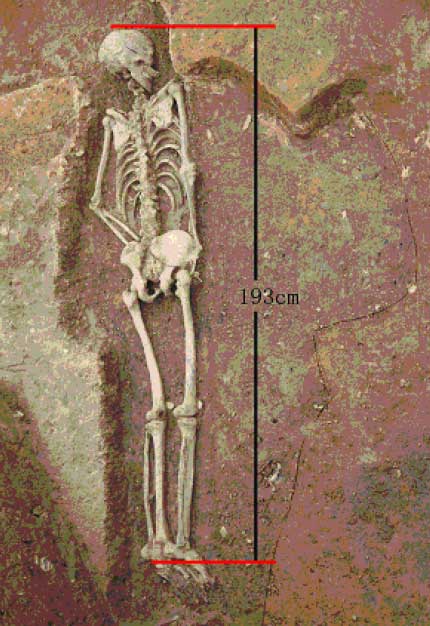A human skeleton of phenomenal size was uncovered by Prof.Zhu Yizhi of Institute of Earth Environment,CAS and Prof.Yang Yachang of Shaanxi Archaeological Institute, during the excavation of a prehistoric site located in the city of Shangnan, Shaanxi province, China, in 2006. The skeleton dates to 4240–4100 cal yr BP, corresponding to the Longshan culture (4400–4000 yr ago). The skeletal characteristics point to a young male 16–18 yr old with a height of 193 cm. This is the tallest skeleton ever discovered in prehistoric China, and thus was named the “Longshan Giant.” The giant appears to be of the Mongoloid race and has many physical characteristics that are similar to those of modern southern Asians. Upon closer examination, 3 drilled holes of 5 cm in diameter were found in the right parietal bone of the skull. No rationale exists yet to explain the presence of these holes.

(Photo credit to Zhu Yizhi et al.))
According to Prof. Zhu Yizhi, certain mysteries remain unsolved. First, no sign of physiological disease was found from the Longshan Giant, was the height of him a natural occurrence? Second, Longshan Giant was young by age, what happened in his life? Third, the three drill holes in his skull were out of deliberate actions, but what for?
Initial research on Longshan Giant was published on Radiocarbon, Yang Y, Zhu Y. The 4000-year-old “Longshan Giant” discovered in Shaanxi Province, China, Radiocarbon, 2010, Vol52(1): 65-68
Provided by Ai Li
 © 2015 Institute of Earth Environment,CAS
© 2015 Institute of Earth Environment,CAS Address:No. 97 Yanxiang Road, Xi'an 710061, Shaanxi, China

 Location :
Location :